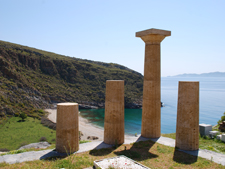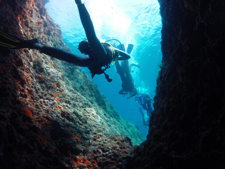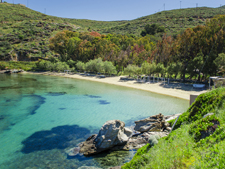History
Kea has a very rich history that is reflected in every corner of it until nowadays. Monuments, archeological sites, architectural sights and museums narrate the most fascinating episodes from the past of the island.
Its older name was “Hydroussa”. The name “Kea” derives from hero Ceos, the leader of the Locrian settlers from Nafpaktos who occupied the island in the ancient times.
The prehistoric settlement of Kefala, located in the homonymous cape in the northwestern coast of the island, was established during the Neolithic Period, around the end of the 4th millennium. The settlement of Aghia Irini in the northern part of Aghios Nikolaos bay was one of the most significant cultural centers in the Aegean Sea from the end of
the Neolithic Period, when the first human establishment is dated, to 15th century B.C., when it was destroyed by the heavy earthquakes in an era of high prosperity. In the archaic years (7th-6th century B.C.) four independent and economically and culturally powerful cities-states (Ioulida, Korissos, Karthaia and Poiiessa) were established, having a separate management structure but usually a unified presence in foreign policy.
In 1204, when the Franks conquered the Byzantine Empire, they named the island Zia, from where the current name of Tzia came. Since 1830, Kea, like all the Cyclades, was included in the newly established Greek state and began to develop agricultural, livestock and commercial activity. With the urban development of Athens in the 20th century, however, the population decreased significantly and gradually began to decline.

Stories from the Ancient Times
Simonides of Ceos (556 B.C. – 468 B.C.) was one of the most important choral and lyric poets of ancient Greece, having to his credit hymns, paeans, dithyrambs, praises, partheneia, laments, elegies and epigrams. He was the first poet who wrote poems upon request and payment and is considered the greatest epigrammatist of antiquity. His poetry during the war with the Persians invigorated the Greeks’ national consciousness, while his poems for the fallen soldiers at Thermopylae and Marathon are considered awe-inspiring. From his poems only excerpts have survived but with his dithyrambs, which were the ones that have not survived, he achieved 56 victories. Death found him in the Court of the Tyrant of Syracuse, Hieron, where he was a host and a glorious monument was erected on his honor in front of the main gate of the at-that-time Greek state. He was famous for his knowledge and he was appreciated and honored for that with the friendship of many great men of his time, like Aristides, Themistocles, Pausanias.
• • •
An epigram by Simonides of Ceos dedicated to the fallen soldiers in the Battle of Thermopylae, 480 B.C.
“Ω ξειν’, αγγέλλειν Λακεδαιμονίοις ότι τήδε κείμεθα τοις κείνων ρήμασι πειθόμενοι.”
“Stranger, tell the Spartans that we are buried here obeying the laws.”
• • •
Prominent personalities from Kea of the antiquity
The poet Bacchylides, nephew of Simonides, was also one of the greatest lyric poets of ancient Greece, who praised particularly his fellow citizens, winners of the Panhellenic games.
The spiritual life of the country includes more prominent figures of the antiquity who were born and active in Kea, but also in other locations in the Aegean, such as sophists Thiramenes and Xenomedes, doctor Erasistratus, philosophers Pythokleidis (teacher of Pericles), the Prodikus (teacher of Thucydides, Euripides and Isocrates), Ariston, and more.
Ancient Kea also contributed with important athletes at the Panhellenic Games. There are reported 69 victories of Kean athletes at Isthmia, Nemea and Olympia Games, who were all praised by Kean poets.
• • •
Bacchylides’ victory hymn:
“There are many victories in Olympia that once upon a pastime glorified the vine planted Kea.”
• • •
Keion to Nomimon
Kea was famous for its political system, which caught the attention of Aristotle and is described in his “Keion Politeia”, only an excerpt of which has however survived. The lawmaker Aristides, one of the seven sages of ancient Greece and known for his strict and exemplary legislation, also hailed from Kea. One of this laws was “Keion to Nomimon”, a particular custom –the only one in the Greek territory- that was preserved until the 3rd century A.D., when Christianity prevailed in the area. According to this custom, every citizen over 60 years old committed suicide drinking conium or mandrake. Any citizen who felt that he was no longer useful to the community because of his senility ought to expose to the leaders of his city the motives for his decision in order to receive permission for suicide. Then, in the presence of his fellow citizens, after a festive ritual, he fulfilled his obligation, drinking readily the conium. In this way, the need for food supplies for the younger was covered –in a society where people reached an old age because of the good climate- and at the same time the will of the citizens themselves to retire thriving and proud was respected. According to the legend, the conium that Socrates used to put an end to his life was also from Kea.

Discover also…
History of the island
Pathways
Diving
Beaches




